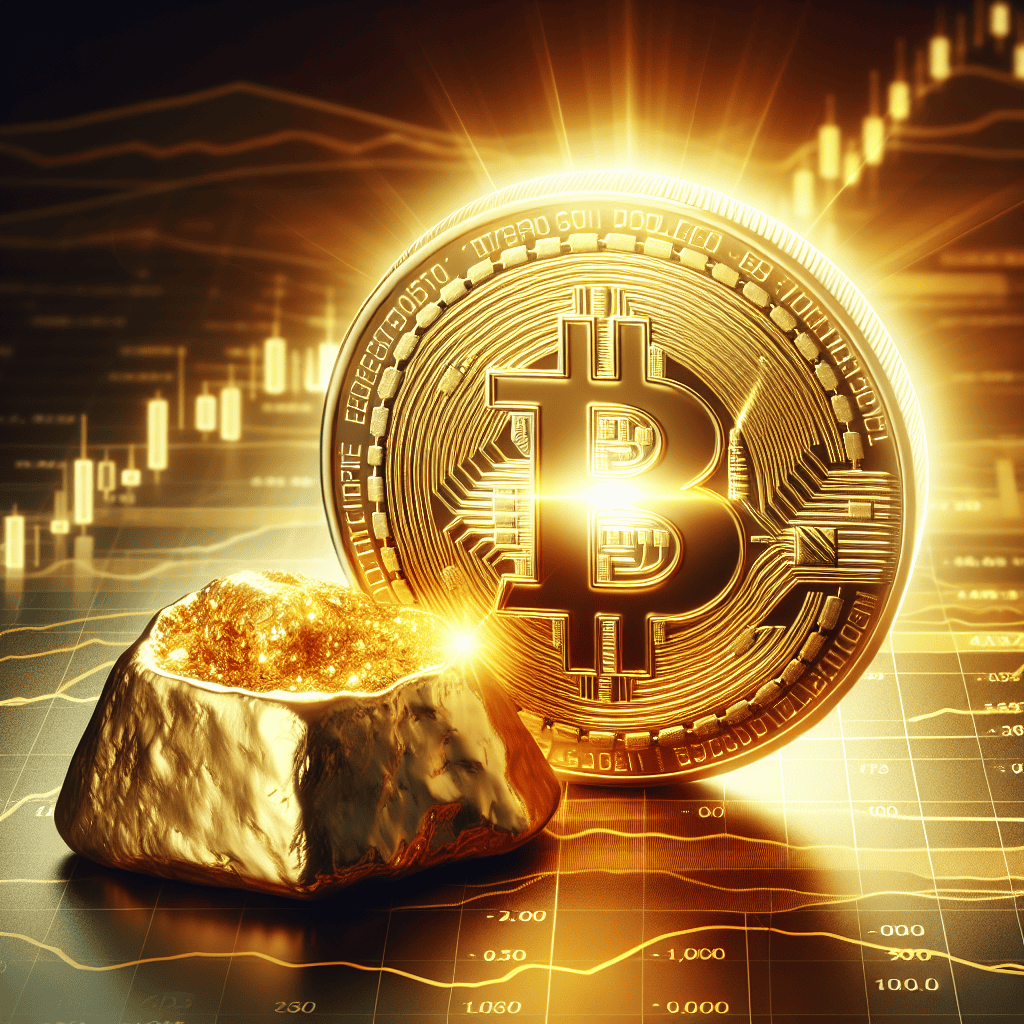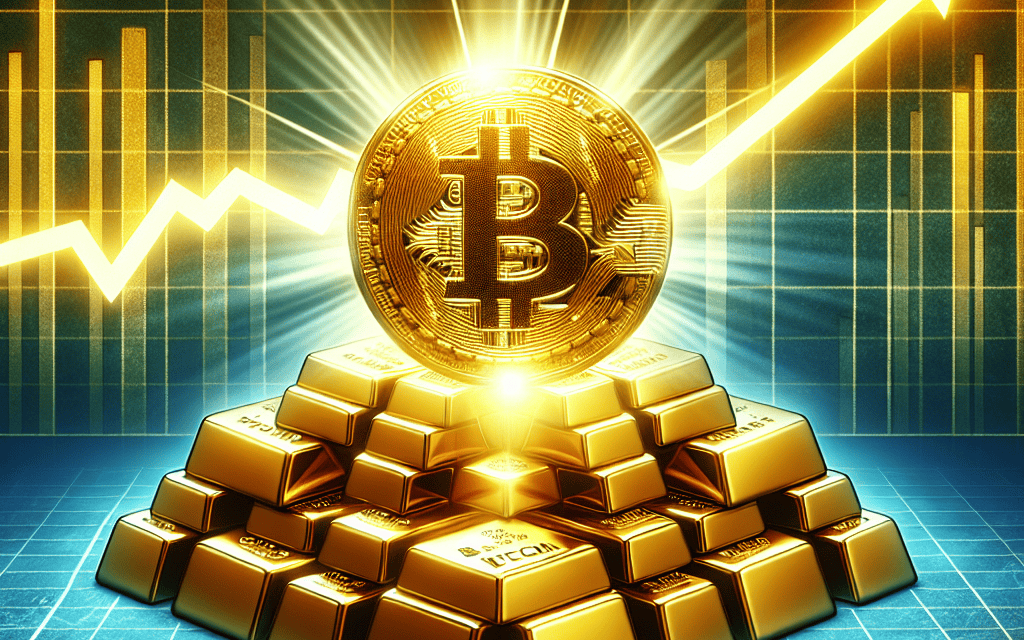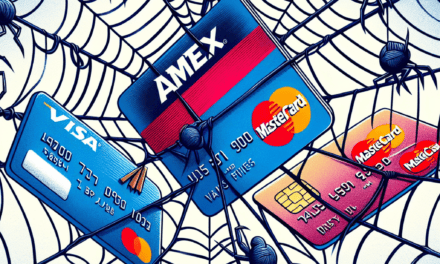“Bitcoin: The Digital Gold Surpassing Boundaries and Breaking Records.”
Introduction
Bitcoin has emerged as a formidable contender to traditional assets, particularly gold, in the realm of investment and wealth preservation. Despite gold’s long-standing reputation as a “safe haven” asset, Bitcoin’s unique attributes have propelled it to the forefront of financial innovation and investment strategy. The digital currency’s decentralized nature, limited supply, and increasing acceptance in mainstream finance have contributed to its appeal. Unlike gold, Bitcoin offers unparalleled portability, divisibility, and accessibility, making it an attractive option for a new generation of investors seeking security and growth potential. Furthermore, Bitcoin’s performance, often characterized by significant returns, has outpaced that of gold, even during periods of economic uncertainty. As the world continues to embrace digital transformation, Bitcoin’s role as a store of value and hedge against inflation is increasingly recognized, positioning it as a modern alternative to gold in the evolving financial landscape.
Digital Scarcity: Bitcoin’s Limited Supply Versus Gold’s Ongoing Discovery
In the realm of investment, the debate between Bitcoin and gold as a store of value has been a topic of considerable discussion. While gold has long been revered as a safe haven asset, Bitcoin’s emergence as a digital alternative has sparked interest and debate among investors. One of the most compelling arguments in favor of Bitcoin over gold is the concept of digital scarcity, which is fundamentally rooted in Bitcoin’s limited supply. This characteristic sets it apart from gold, which, despite its historical significance, continues to be discovered and mined.
Bitcoin’s scarcity is embedded in its very design. Created by the pseudonymous Satoshi Nakamoto, Bitcoin was introduced with a finite supply cap of 21 million coins. This predetermined limit is enforced by the underlying blockchain technology, ensuring that no more than 21 million Bitcoins will ever exist. This scarcity is further accentuated by the process of halving, which occurs approximately every four years, reducing the reward for mining new blocks by half. As a result, the rate at which new Bitcoins are introduced into circulation decreases over time, leading to an increasingly scarce asset.
In contrast, gold, while limited in supply on Earth, does not possess the same level of scarcity as Bitcoin. Gold’s supply is subject to ongoing discovery and extraction, with new deposits being found and mined regularly. Although the total amount of gold on Earth is finite, technological advancements in mining and exploration continue to increase the known reserves. This ongoing discovery process means that the supply of gold is not as fixed or predictable as that of Bitcoin, which can lead to fluctuations in its value based on new findings and extraction capabilities.
Moreover, Bitcoin’s digital nature offers advantages that gold cannot match. As a digital asset, Bitcoin is easily transferable across borders without the need for physical transportation. This ease of transferability makes it an attractive option for investors seeking a liquid and accessible store of value. Additionally, Bitcoin’s decentralized nature ensures that it is not subject to the control of any single entity or government, providing a level of security and independence that gold, often stored in centralized vaults, cannot guarantee.
Furthermore, Bitcoin’s transparency and verifiability through blockchain technology provide an additional layer of trust for investors. Every transaction is recorded on a public ledger, allowing for complete transparency and traceability. This level of transparency is not possible with gold, where the authenticity and purity of the asset can sometimes be called into question.
While gold has a long-standing history as a reliable store of value, Bitcoin’s digital scarcity and unique attributes position it as a formidable alternative. The fixed supply of Bitcoin, coupled with its ease of transfer and decentralized nature, offers a compelling case for its superiority over gold in the modern digital age. As investors continue to seek assets that provide security and value preservation, Bitcoin’s limited supply and technological advantages make it an increasingly attractive option. In conclusion, while both Bitcoin and gold have their merits, the digital scarcity inherent in Bitcoin’s design gives it an edge that is difficult to overlook, especially in an era where digital assets are becoming increasingly prominent in the global financial landscape.
Portability: The Ease of Transferring Bitcoin Compared to Gold
In the ever-evolving landscape of investment assets, Bitcoin has emerged as a formidable contender against traditional stores of value like gold. While gold has long been revered for its stability and intrinsic value, Bitcoin offers a modern alternative that appeals to the digital age. One of the most compelling advantages of Bitcoin over gold is its unparalleled portability, which significantly enhances its appeal as a global asset.
To begin with, the physical nature of gold inherently limits its portability. Gold, being a tangible asset, requires secure storage and transportation, which can be both cumbersome and costly. Transferring large quantities of gold across borders involves logistical challenges, including the need for secure transport, insurance, and compliance with various regulatory requirements. These factors not only add to the cost of transferring gold but also introduce delays and complexities that can hinder swift transactions.
In contrast, Bitcoin, as a digital currency, offers a level of portability that is unmatched by any physical asset. Bitcoin transactions can be executed quickly and efficiently across the globe, without the need for physical movement. This is made possible by the decentralized nature of blockchain technology, which underpins Bitcoin. With just an internet connection, Bitcoin can be transferred from one party to another in a matter of minutes, regardless of geographical location. This ease of transfer is particularly advantageous in an increasingly interconnected world where speed and efficiency are paramount.
Moreover, the cost-effectiveness of transferring Bitcoin further underscores its superiority in terms of portability. Traditional methods of transferring gold often incur significant fees, including those for transportation, storage, and insurance. In contrast, Bitcoin transactions typically involve lower fees, especially when compared to the costs associated with moving physical gold. This economic efficiency makes Bitcoin an attractive option for investors looking to minimize transaction costs while maximizing the speed of asset transfer.
Additionally, Bitcoin’s digital nature allows for greater flexibility in terms of storage and access. Unlike gold, which requires secure vaults or safes, Bitcoin can be stored in digital wallets, which are easily accessible via smartphones, computers, or other digital devices. This accessibility ensures that investors can manage and transfer their assets with ease, without the need for physical infrastructure. Furthermore, the security features inherent in blockchain technology provide a robust safeguard against theft and fraud, offering peace of mind to Bitcoin holders.
While some may argue that the volatility of Bitcoin presents a risk compared to the stability of gold, it is important to recognize that the portability and ease of transfer offered by Bitcoin provide a distinct advantage in certain scenarios. For instance, in situations where rapid asset liquidation is necessary, Bitcoin’s quick transfer capabilities can be invaluable. This is particularly relevant in today’s fast-paced financial markets, where the ability to swiftly respond to changing conditions can be crucial.
In conclusion, while gold continues to hold its place as a reliable store of value, Bitcoin’s superior portability offers a compelling advantage that cannot be overlooked. The ease and efficiency with which Bitcoin can be transferred across borders, coupled with its cost-effectiveness and accessibility, make it a formidable alternative to traditional assets like gold. As the world becomes increasingly digital, the portability of Bitcoin is likely to play an ever more significant role in its growing appeal as a global asset.
Security: Blockchain Technology Versus Physical Storage Risks
In the ever-evolving landscape of investment opportunities, Bitcoin has emerged as a formidable contender against traditional assets like gold. While both are often considered safe havens during economic uncertainty, Bitcoin’s underlying technology offers distinct advantages in terms of security. At the heart of Bitcoin’s security is blockchain technology, a decentralized ledger system that records all transactions across a network of computers. This system ensures that once a transaction is recorded, it cannot be altered retroactively without the consensus of the network, making it highly resistant to fraud and tampering. In contrast, gold, despite its historical reputation as a secure asset, faces significant risks associated with physical storage.
To begin with, the decentralized nature of blockchain technology provides a level of security that is difficult to match with physical assets. Each transaction on the Bitcoin network is verified by multiple nodes, ensuring that the data is accurate and consistent across the entire system. This decentralization means that there is no single point of failure, making it extremely difficult for malicious actors to compromise the network. Furthermore, the use of cryptographic techniques in blockchain technology adds an additional layer of security, protecting users’ identities and ensuring the integrity of the data. In comparison, gold requires physical storage, which inherently involves risks such as theft, loss, or damage. Even with advanced security measures, the physical nature of gold makes it vulnerable to these threats.
Moreover, the transparency and immutability of blockchain technology enhance Bitcoin’s security profile. Every transaction is recorded on a public ledger, allowing anyone to verify the authenticity of the transactions. This transparency reduces the risk of fraud and increases trust among users. On the other hand, gold transactions are not as easily verifiable, and the lack of a standardized system for tracking ownership can lead to disputes and fraud. Additionally, the immutability of blockchain records ensures that once a transaction is confirmed, it cannot be altered, providing a permanent and tamper-proof record. This feature is particularly appealing to investors seeking a secure and reliable store of value.
In addition to these technological advantages, Bitcoin’s security is further bolstered by its global accessibility. Unlike gold, which requires physical transportation and storage, Bitcoin can be transferred quickly and securely across borders with minimal cost. This ease of transfer not only enhances security by reducing the need for physical handling but also makes Bitcoin a more versatile asset in a globalized economy. The ability to move assets seamlessly across jurisdictions without the risk of physical loss or theft is a significant advantage that Bitcoin holds over gold.
While it is important to acknowledge that Bitcoin is not without its own set of risks, such as regulatory challenges and market volatility, its security features offer a compelling case for its superiority over gold in certain aspects. The combination of decentralization, cryptographic security, transparency, and global accessibility makes Bitcoin a robust and secure investment option. As the world continues to embrace digital solutions, the security advantages offered by blockchain technology are likely to become increasingly important, further solidifying Bitcoin’s position as a leading asset in the modern financial landscape. In conclusion, while gold has long been revered for its security, Bitcoin’s innovative use of blockchain technology provides a level of security that is unmatched by traditional physical assets.
Divisibility: Bitcoin’s Advantage in Microtransactions Over Gold

In the ever-evolving landscape of financial assets, Bitcoin has emerged as a formidable contender to traditional stores of value, such as gold. While both assets have their unique advantages, Bitcoin’s divisibility offers a distinct edge, particularly in the realm of microtransactions. This characteristic not only enhances its utility but also positions it as a more versatile medium of exchange in the digital age.
To begin with, the divisibility of Bitcoin is a fundamental feature that sets it apart from gold. Bitcoin can be divided into smaller units, with the smallest being a satoshi, which is one hundred millionth of a Bitcoin. This high degree of divisibility allows for transactions of any size, from large-scale purchases to minute microtransactions. In contrast, gold, despite its historical significance and intrinsic value, lacks this level of divisibility. While gold can be divided into smaller units, such as grams or ounces, the process is not as seamless or practical for everyday transactions. This limitation becomes particularly evident in the context of digital commerce, where precision and flexibility in transaction sizes are paramount.
Moreover, the digital nature of Bitcoin further amplifies its advantage in microtransactions. In an increasingly digital world, the ability to conduct transactions online with ease and efficiency is crucial. Bitcoin’s blockchain technology facilitates quick and secure transactions, making it an ideal candidate for digital payments. This is especially relevant in the context of microtransactions, where the cost and speed of transactions can significantly impact their feasibility. Gold, on the other hand, is inherently a physical asset, and its use in digital transactions often involves additional steps, such as conversion into digital representations or tokens, which can introduce inefficiencies and complexities.
Furthermore, Bitcoin’s divisibility and digital nature align well with the growing trend of micropayments in various industries. From content creators seeking to monetize their work through small payments to consumers making fractional purchases in gaming or media platforms, the demand for microtransactions is on the rise. Bitcoin’s ability to facilitate these transactions without the friction associated with traditional financial systems makes it an attractive option for both businesses and consumers. Gold, while valuable, does not offer the same level of convenience or adaptability in these scenarios.
In addition to its practical advantages, Bitcoin’s divisibility also contributes to its accessibility. By allowing individuals to purchase and own fractions of a Bitcoin, it democratizes access to the asset, enabling a broader range of investors to participate in the market. This inclusivity is particularly significant in a world where financial inequality is a growing concern. Gold, with its higher entry point and less flexible divisibility, does not offer the same level of accessibility to smaller investors.
In conclusion, while gold continues to hold its place as a reliable store of value, Bitcoin’s divisibility provides it with a distinct advantage in the realm of microtransactions. Its ability to facilitate precise, efficient, and accessible transactions in a digital economy underscores its potential as a versatile and modern financial asset. As the world continues to embrace digital solutions, Bitcoin’s divisibility may well prove to be a decisive factor in its ongoing competition with gold.
Transparency: Public Ledger of Bitcoin Versus Gold’s Opaque Market
Bitcoin, often hailed as digital gold, has increasingly captured the attention of investors and financial analysts alike, particularly as it continues to outshine traditional gold, even amidst record highs. One of the most compelling reasons for Bitcoin’s ascendancy over gold is the transparency offered by its public ledger system, which starkly contrasts with the opaque nature of the gold market. This transparency is not merely a technological feature but a fundamental shift in how value is tracked and verified, providing a level of trust and security that gold, with its centuries-old market practices, struggles to match.
At the heart of Bitcoin’s transparency is the blockchain, a decentralized and immutable ledger that records every transaction ever made. This public ledger is accessible to anyone with an internet connection, allowing for unprecedented levels of scrutiny and verification. Each transaction is time-stamped and linked to the previous one, creating a chain of blocks that is virtually tamper-proof. This system ensures that all Bitcoin transactions are transparent and traceable, providing a clear and verifiable history of ownership. In contrast, the gold market operates in a much more opaque manner. While gold has been a store of value for millennia, its market is often criticized for its lack of transparency. Gold transactions typically occur in over-the-counter markets, where prices and trades are not always publicly disclosed. This opacity can lead to price manipulation and a lack of trust among investors, who may find it challenging to verify the authenticity and provenance of their gold holdings.
Moreover, the process of gold mining and distribution is fraught with complexities and ethical concerns. The supply chain of gold is often murky, with issues such as illegal mining, environmental degradation, and human rights abuses casting a shadow over the market. In contrast, Bitcoin’s creation process, known as mining, is entirely digital and follows a transparent protocol. While Bitcoin mining does raise environmental concerns due to its energy consumption, the process itself is open to public scrutiny, with every new Bitcoin being traceable back to its origin.
Furthermore, Bitcoin’s transparency extends beyond its transaction history to its monetary policy. The total supply of Bitcoin is capped at 21 million coins, a figure that is publicly known and cannot be altered. This predictability stands in stark contrast to gold, where the total supply is uncertain and subject to the discovery of new reserves. The transparent nature of Bitcoin’s supply provides investors with a clear understanding of its scarcity, a key factor in its value proposition.
In addition to these factors, the digital nature of Bitcoin allows for greater accessibility and inclusivity. Anyone with internet access can participate in the Bitcoin network, buying, selling, or holding the cryptocurrency without the need for intermediaries. This democratization of access is a significant departure from the gold market, where barriers to entry can be high, and transactions often require intermediaries such as banks or brokers.
In conclusion, while gold has long been revered as a safe haven asset, Bitcoin’s transparent public ledger offers a modern alternative that addresses many of the shortcomings associated with the gold market. The ability to verify transactions, trace ownership, and understand the monetary policy of Bitcoin provides a level of trust and security that is increasingly appealing to investors. As the financial landscape continues to evolve, the transparency of Bitcoin’s public ledger may well be the key factor that allows it to outshine gold, even as both assets reach record highs.
Adoption: Growing Institutional Interest in Bitcoin Over Gold
In recent years, the financial landscape has witnessed a significant shift in the perception of traditional and digital assets, with Bitcoin emerging as a formidable contender to gold, the long-standing safe-haven asset. This transformation is largely driven by growing institutional interest in Bitcoin, which has outshone gold despite the latter’s record highs. As we delve into the reasons behind this trend, it becomes evident that Bitcoin’s unique attributes and the evolving financial ecosystem have played pivotal roles in its rising prominence.
To begin with, the digital nature of Bitcoin offers a level of accessibility and convenience that gold cannot match. Institutional investors are increasingly drawn to Bitcoin due to its ease of transaction and storage. Unlike gold, which requires physical storage and security measures, Bitcoin can be securely stored in digital wallets, reducing logistical challenges and costs. This digital advantage is particularly appealing to institutions that prioritize efficiency and cost-effectiveness in their investment strategies.
Moreover, the finite supply of Bitcoin, capped at 21 million coins, presents a compelling case for its value proposition. This scarcity is algorithmically enforced, providing a level of predictability and transparency that is absent in the gold market, where supply can fluctuate based on mining activities and geopolitical factors. Institutional investors, therefore, view Bitcoin as a hedge against inflation and currency devaluation, similar to gold, but with the added benefit of a predetermined supply limit.
In addition to its scarcity, Bitcoin’s decentralized nature is another factor contributing to its appeal. Unlike gold, which is subject to regulatory oversight and geopolitical influences, Bitcoin operates on a decentralized network, free from government control. This decentralization aligns with the growing demand for assets that offer autonomy and protection from political and economic instability. As a result, institutions are increasingly considering Bitcoin as a strategic asset in their portfolios, seeking diversification and risk mitigation.
Furthermore, the technological advancements underpinning Bitcoin, particularly blockchain technology, have garnered significant interest from institutional investors. Blockchain’s potential to revolutionize various industries, from finance to supply chain management, adds an innovative dimension to Bitcoin that gold lacks. Institutions are not only investing in Bitcoin as a digital asset but are also exploring the broader implications of blockchain technology, which could lead to transformative changes in their operations and investment strategies.
The growing acceptance of Bitcoin by regulatory bodies and financial institutions has also played a crucial role in its adoption. As regulatory frameworks evolve to accommodate digital assets, institutions are gaining confidence in Bitcoin’s legitimacy and long-term viability. This regulatory clarity, coupled with the increasing number of financial products and services centered around Bitcoin, such as futures contracts and exchange-traded funds, has facilitated institutional participation in the Bitcoin market.
In conclusion, while gold continues to hold its status as a traditional safe-haven asset, Bitcoin’s unique attributes and the evolving financial landscape have positioned it as a formidable alternative. The growing institutional interest in Bitcoin over gold is driven by its digital nature, finite supply, decentralization, technological innovation, and increasing regulatory acceptance. As institutions continue to explore and invest in Bitcoin, it is poised to play an increasingly significant role in the global financial ecosystem, outshining gold despite its record highs.
Innovation: Bitcoin’s Role in the Digital Economy Versus Gold’s Traditional Use
In the ever-evolving landscape of the global economy, Bitcoin has emerged as a formidable contender against traditional assets like gold. While gold has long been revered as a safe haven and a store of value, Bitcoin’s innovative characteristics have positioned it as a significant player in the digital economy. Despite gold reaching record highs, Bitcoin’s unique attributes and its role in the digital economy underscore why it outshines gold in several respects.
To begin with, Bitcoin’s decentralized nature is a fundamental aspect that sets it apart from gold. Unlike gold, which is subject to geopolitical influences and centralized control, Bitcoin operates on a decentralized network known as blockchain. This decentralized framework ensures transparency, security, and resistance to censorship, making it an attractive option for those seeking financial autonomy. Furthermore, Bitcoin’s limited supply, capped at 21 million coins, introduces a level of scarcity that parallels gold’s finite nature. However, Bitcoin’s digital scarcity is algorithmically enforced, providing a predictable and transparent supply schedule that gold cannot match.
Moreover, Bitcoin’s role in the digital economy extends beyond its function as a store of value. It serves as a medium of exchange, facilitating transactions across borders with ease and efficiency. In contrast, gold’s physical nature makes it cumbersome for everyday transactions and impractical for the digital age. Bitcoin’s ability to be transferred quickly and securely over the internet has revolutionized the way value is exchanged globally, offering a level of convenience that gold cannot provide. This digital utility is further enhanced by the growing acceptance of Bitcoin by businesses and institutions, which recognize its potential to streamline financial operations and reduce transaction costs.
In addition to its transactional advantages, Bitcoin’s integration into the digital economy is bolstered by its role as a catalyst for innovation. The underlying blockchain technology has spurred the development of decentralized finance (DeFi) platforms, non-fungible tokens (NFTs), and smart contracts, all of which are reshaping traditional financial systems. These innovations highlight Bitcoin’s versatility and its capacity to drive economic transformation in ways that gold, with its static nature, cannot. As a result, Bitcoin is not only a store of value but also a gateway to a broader ecosystem of digital assets and financial services.
Furthermore, the increasing institutional adoption of Bitcoin underscores its growing legitimacy and acceptance as a mainstream asset. Major corporations and financial institutions are incorporating Bitcoin into their portfolios, recognizing its potential to hedge against inflation and diversify investment strategies. This institutional interest is a testament to Bitcoin’s resilience and its ability to adapt to the changing economic landscape. In contrast, while gold remains a staple in institutional portfolios, its role is largely confined to traditional investment strategies, lacking the dynamic potential that Bitcoin offers.
In conclusion, while gold continues to hold its place as a traditional store of value, Bitcoin’s innovative characteristics and its integral role in the digital economy highlight why it outshines gold. Its decentralized nature, digital utility, capacity for innovation, and growing institutional adoption position Bitcoin as a transformative force in the financial world. As the digital economy continues to expand, Bitcoin’s prominence is likely to increase, further solidifying its status as a leading asset in the modern era.
Q&A
1. **Scarcity and Supply Cap**: Bitcoin has a fixed supply cap of 21 million coins, making it inherently scarce. Gold, while limited, continues to be mined, which can affect its scarcity over time.
2. **Portability and Divisibility**: Bitcoin is easily portable and can be divided into smaller units (satoshis), making it more practical for transactions compared to gold, which is bulky and less divisible.
3. **Digital Nature and Accessibility**: As a digital asset, Bitcoin can be accessed and transferred globally with an internet connection, offering greater accessibility than physical gold.
4. **Decentralization and Security**: Bitcoin operates on a decentralized network, providing security and reducing the risk of centralized control or manipulation, unlike gold, which is often stored in centralized locations.
5. **Inflation Hedge Perception**: Many investors view Bitcoin as a hedge against inflation, similar to gold, but with the added benefits of digital technology and potential for higher returns.
6. **Technological Adoption and Innovation**: Bitcoin benefits from ongoing technological advancements and increasing adoption in financial systems, which can drive its value and utility beyond that of gold.
7. **Market Sentiment and Speculation**: The speculative nature of Bitcoin attracts investors seeking high returns, contributing to its outperformance compared to the traditionally stable gold market.
Conclusion
Bitcoin outshines gold despite record highs due to several key factors. Firstly, Bitcoin’s digital nature and decentralized framework offer a level of accessibility and security that traditional gold investments cannot match. Its limited supply, capped at 21 million coins, creates a scarcity similar to gold but with a predictable and transparent issuance schedule. Additionally, Bitcoin’s ease of transfer and divisibility make it more practical for modern transactions and micro-investments. The growing acceptance of Bitcoin as a legitimate asset class by institutional investors further enhances its appeal, providing liquidity and market depth that gold struggles to achieve in the digital age. Moreover, Bitcoin’s potential for high returns, driven by technological innovation and adoption, attracts a new generation of investors seeking growth opportunities beyond the traditional safe-haven status of gold. As the world increasingly shifts towards digital solutions, Bitcoin’s unique attributes position it as a more versatile and forward-looking investment compared to gold.





